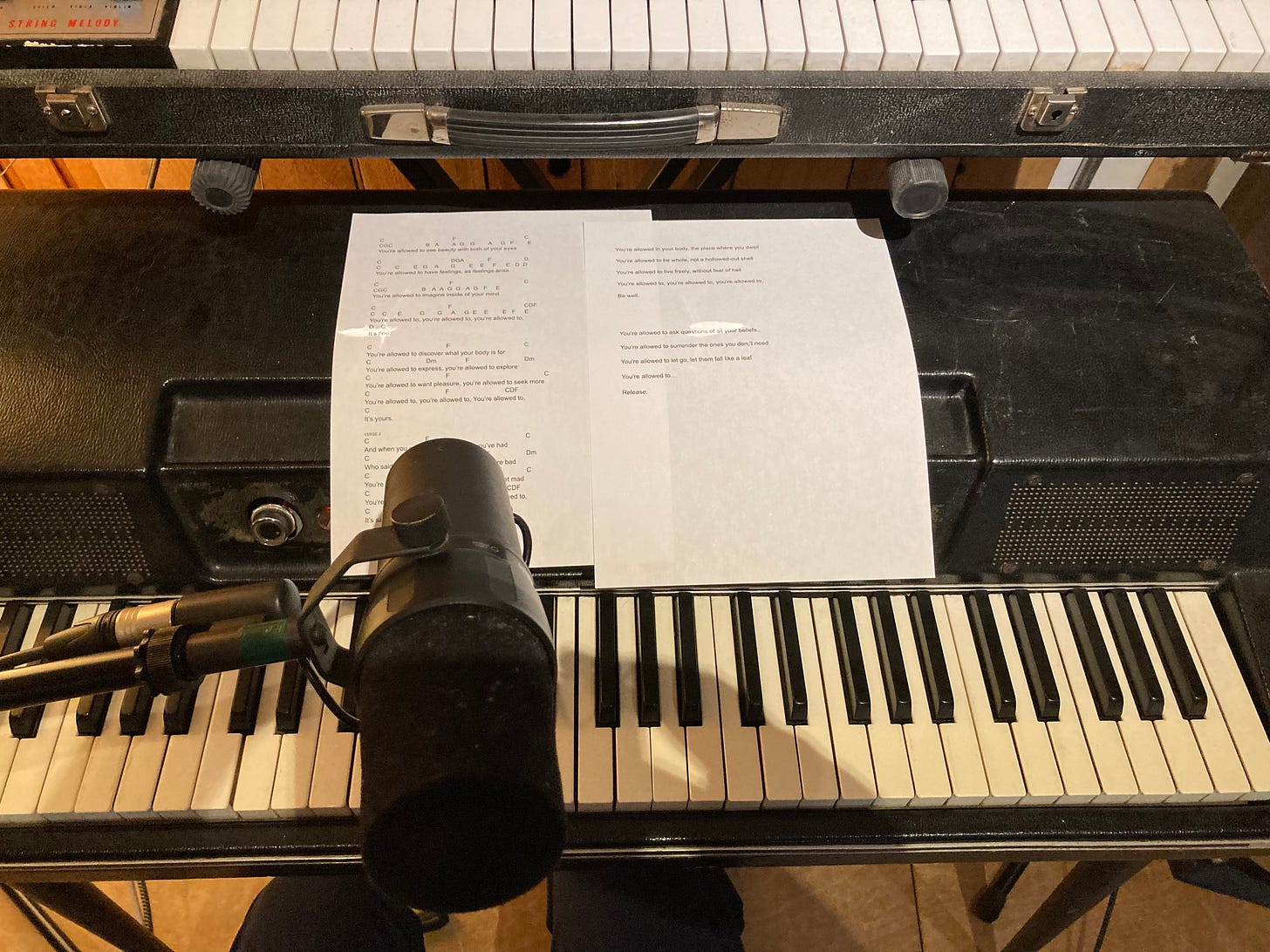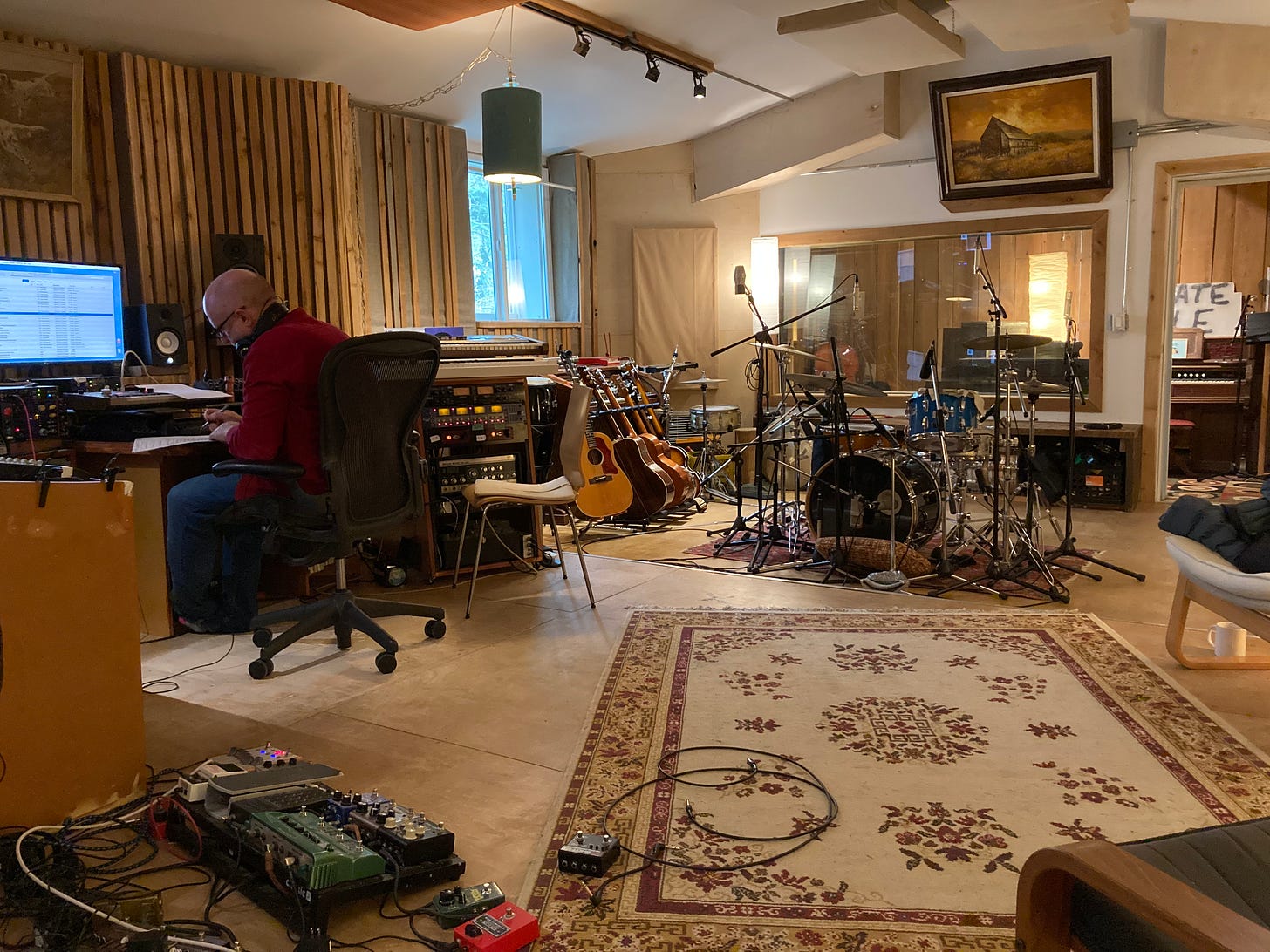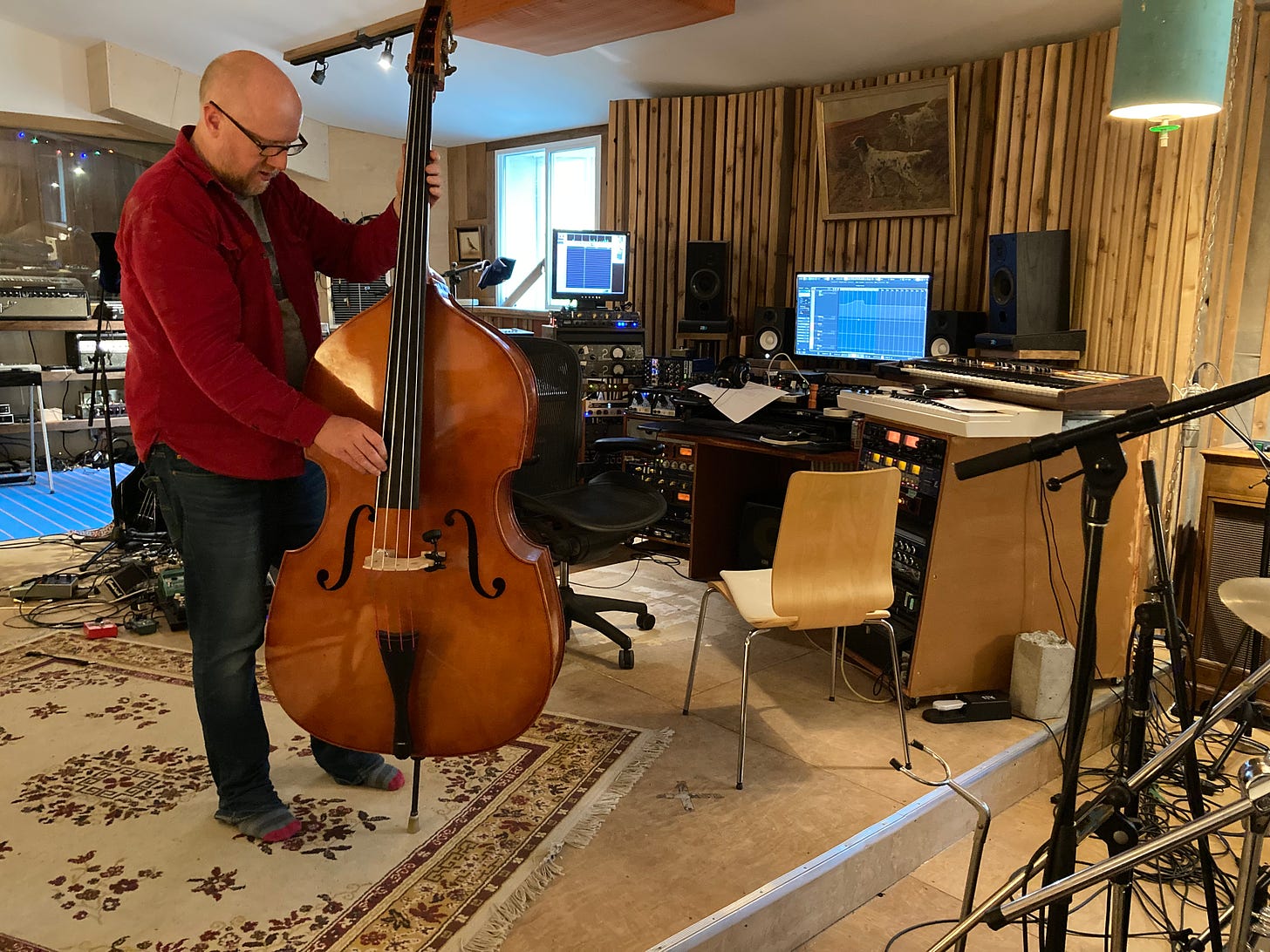It’s been a while since I’ve shared! After returning from my spring break sessions in the studio, I got sick — and then the company I worked for was acquired, and I decided to take my work independent as a separate business! And then I got sick again. It’s been a rather life-changing couple months. But let’s jump back into things, shall we?
Over spring break, my family and I travelled to the Lower Mainland to spend time with friends, family and tourist attractions, and to create the space for me to spend time with producer Jonathan Anderson in his Protection Island studio in Maple Ridge.
The goal of the time in the studio was to get familiar with each other’s working styles, to see what we might accomplish in a couple days – and hopefully get some songs moved into a more professional quality.
Since it was my first time as an artist in a recording studio, there were a lot of firsts — many thresholds to cross. Jonathan’s studio space and working style is incredibly welcoming. Warm tones are what he brings in both the visual experience of the studio, as well as in open approach to collaborating, and the sonic textures he is able to bring about. Previously, we had only ever connected by telephone, but it was easy and fluid to step into a musical partnership.
We began our first day by exploring the songs in my collection, and discussing themes, intentions and influences. We agreed that my song “You’re Allowed To” would be an ideal starting point: simple in structure, poignant in meaning, and part of the “core” songs I would consider foundational to my project.
The first job was to record a scratch track. This was an unvarnished, one-take recording of my piano and vocals at the same time, to the build the track around. We got to use Jonathan’s Wurlitzer for that (famously recognizable in the intro notes of one of my favourite songs, “Where It’s At” by Beck).

From here, Jonathan tempo-mapped the song. This is to create a click-track (a metronome rhythm) that will play during the rest of our takes throughout the day. Because the song shifts tempo slightly, moving from slow, to quicker in the build, then slow again, it needs a click-track that can shift tempo.
With the click-track built, we moved to record the actual piano track we’d be using.
Jonathan has a vintage, 100-year-old piano isolated in a separate recording booth, capturing the sound with a unique three-microphone setup he had recently stumbled into. With him at the control booth, communicating to me via headphones, I sat at this classic piano and worked on playing along with the click track.
This part got a little frustrating. Rather than the free-flowing simplicity of the scratch track, we wanted to get a take that will really stand as the song’s actual foundation. The keys on this old piano were quite sticky, and also unfamiliar to me in their weight. The pressure of needing to play it “right” began to get to me, and as well, Jonathan helped me notice a couple discrepancies where the chords I had annotated.
In between talks, we talked about the musical influences driving the song “You’re Allowed To.” I spoke of hearing Hawksley Workman perform his song Goodbye to Radio in concert. In the recorded version, it’s a quiet lullaby that slowly builds, but performed live, Hawksley’s anthemic proclamations and accompanying guitar riffs function as all-out declaration. In the space of one song, it has the power to move from a hush to a wail. We also talked about the subtle simplicity of Tom Waits’ early recordings, simple instrumentation but powerful songwriting, and wondered in what ways some basic building blocks could help “You’re Allowed To” grow into the
An interesting moment happened as we tried to decide how that should influence the way I was playing the piano at that moment. Does it start loud, like powerful anthem? Jonathan asked me, “Who are you imagining singing the song to?”
I knew the answer — it was me, as a younger version of myself. This is a song to sing quietly, not to yell. It’s a song that grows, as confidence grows. We got the takes we needed, and took a break.
In Jonathan’s artist’s cabin, in the drafty chill at the kitchen table, we talked about neurodivergence as we ate our bagged lunch, and the ways that our minds are uniquely our own, despite the ways our culture is built to primarily support the neurotypical mind. Each of us have experiences with friends and loved ones who are on or near the spectrum of autism and Asperger’s, or have ADHD, or identify as highly sensitive. It was a valuable metaphor for the musical themes we were recording that day: finding one’s own path, despite the rigidity of the system.
Throughout the day, we added layer after layer of instrument. Jonathan brought out his stand-up bass and nailed the bassline in two takes.
I demonstrated how I had imagined the drums going — where they would enter, how they would build — and then Jonathan took the kit to record the take we used.
You’ll also hear in the song the quiet additions of Jonathan’s acoustic guitar, which he contributed in a brief moment in front of his production workstation.
When it came time for the electric guitar, this was a part that I knew wanted to move towards in the song. As the song reaches its zenith, I imagine the guitar creating a wall of protection for the singer and its listeners. It’s the time where the gentleness grows into a confidence that gets expressed at full volume — a release. Jonathan performed this so masterfully, as we cycled through filters and pedals to get the tone that matched the song. I love it so much.
On the drive down, as we passed through Hope, I remember musing with Kendra: “I’ve never had the opportunity to direct somebody on an electric guitar before, and all I imagine I’ll know how to say is: make it more like nyeeeeeow-yaaaawwww…!” and that’s pretty much exactly how it went. 😆
You’ll hear in the track the sound of an organ growing, too. That’s the Hammond — it was the next track we added after the base of the piano. It was super fun to mess with the tabs, dials and pedals to build the thrumming accompaniment that fills out the song. Jonathan gave me a brief tutorial on how it worked, and I performed the sounds you hear.
While I was away from the studio, Jonathan recorded the Mellotron contributions. This is a vintage synthesizer that plays tape reels of classic instruments — he added in some gorgeous french horn sounds as we reach partway through he song.
When the full instrumentation was in place, I moved to the vocal booth. On a vintage Russian microphone, I worked through a number of vocal takes, trying to be attentive to where breathing happens, and create a performance that would fit as part of this newly-created base track. It was like singing along with a full band, now that the drums, guitars and more had built into a full anthem backing me up.
By the time the day ended, we had created the song.
I’ll share it with you here, but with a couple more notes. This recording, too, is a demo. It’s the result of one day of collaborative, fluid work. It’s not finished, mixed or mastered. Jonathan’s process would ordinarily be to spend at least another day collaboratively to move it forward, with additional time afterwards independently to polish it up. This isn’t headed to Spotify anytime soon, but I wanted to share it with you all as folks who have been following along on this journey.
If you missed the original post of You’re Allowed To, you can read the story behind it here.
After the end of the first day, I was up until midnight, calling a tow truck to repair some tire damage our van had sustained on the drive over. It was exhausting, and took away from the chance to spend the night reflecting and preparing. But it did mean I was carrying a bit of an extra edge of intention and energy into the next day, and wanting to push the process a little more, now that I knew what Jonathan’s process was like, and what the studio could do. I decided that for Day 2, I would bring a new song I had not yet shared with this community. I can’t wait to share it with you next. It’s called “That Is What I’m Healing From.”




